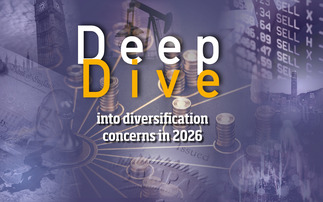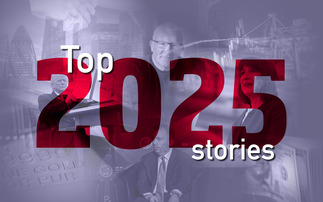Industry Voice: As we approach the New Year, a range of disruptive forces present distinct challenges for investors - playing out in the geopolitical arena in the form of trade wars, on the policy front in the form of divergent monetary policies, and on the economic front as countries contend with a late cycle environment.
We've narrowed these down to five key themes that should continue to dominate headlines and drive the performance of financial assets in 2019.
At a time when many investors review their portfolio positioning, our Asset Allocation team outlines its investment ideas to help navigate the environment ahead.
THEME 1: GLOBAL TRADE WARS - CAN CHINA AVOID A CRISIS?
The trade conflict between the US and China has been escalating - and it might get worse before it gets better if the two sides continue to play a game in which neither side is willing to yield first.
A deterioration in the relationship between the world's two superpowers might have far reaching consequences, such as a weaker yuan and stronger US dollar, rising geopolitical tensions and slowing global economic growth. A less visible but potentially greater risk is the impact on US inflation - higher prices caused by tariffs could lead to an upside surprise in inflation data and a subsequent sell-off in US rates and equities.
Although the direct impact of a trade war on the US economy could be marginal, China's economic growth could lose nearly 2% in the next two years, according to the International Monetary Fund, creating a serious drag on the global economy. China has been considered a major risk for years and, with imbalances building, this could finally materialise - indeed, trade tensions have already sent the Chinese stock market plunging in 2018. After the 2008 Global Financial Crisis, China was the economic locomotive that helped to pull the rest of the world out of recession; it might lack the necessary power to do so again next time.
If the trade conflict is resolved, however, Chinese assets could offer a buying opportunity at bargain prices.
Investment ideas
THEME 2: FIXED INCOME - A BIAS TOWARDS RISING BOND YIELDS?
Since the 2008 credit crisis, government bond yields have declined significantly, partly due to quantitative easing (QE) and partly due to subdued expectations about future short-term rates, inflation and economic growth. These expectations are reflected in the flat yield curve. With the tapering of QE and the beginning of the hiking cycle, we are now at a turning point, which could have significant consequences for bonds as well as all major asset classes.
The key risk is a surprising jump in inflation, leading to a realisation that central banks are behind the curve and raising expectations of faster tightening. In this scenario, a correction in both equities and bonds could occur. This would be problematic for portfolios relying on a negative equity/bond correlation for diversification. Higher US yields could also mean a strong US dollar, providing some protection to clients exposed to US assets.
Tightening is dependent on continued economic strength; but if the economy slows, bonds may have another good year and could outperform equities.
Investment ideas
THEME 3: EMERGING MARKETS - RISK OR OPPORTUNITY?
Higher US interest rates may attract capital flows away from emerging markets (EM) as the opportunity cost of being in safer US assets decreases. In addition, a combination of higher US rates with stable non-US rates should strengthen the US dollar, making it more difficult for EM countries to repay dollar-denominated debt, while there is also the potential for intensifying protectionism and global trade wars.
Each of these factors by themselves, or even in combination, may not necessarily lead to an EM crisis; however, the weight of some idiosyncratic country-level problems, such as those we have seen in Argentina, Turkey or Brazil, could lead to contagion, which in turn could be amplified by indiscriminate selling from ETF investors.
Overall, however, the fundamentals of many EM countries are sound. The valuations of EM equity and bond markets look attractive after lagging their developed markets counterparts in 2018, particularly US equities. If an EM crisis doesn't materialise, it may be a buying opportunity.
Investment ideas
THEME 4: GLOBAL STOCK MARKETS - ANOTHER YEAR IN THE LONG BULL CYCLE?
President Trump will do everything he can to keep the US economy strong because the success of his presidency relies on it, although his hands might be somewhat tied following the US midterm elections. While the current economic cycle has become one of the longest in history, we see no immediate warning signs that it is likely to end soon. As such, unless unforeseen significant risks materialise to derail the US economy, we may have another strong year for equity markets despite concerns over valuations. The policy of ‘America first' with respect to trade negotiations may help push the value of American assets higher.
But there is a risk here. America still relies on the rest of the world as much as the rest of the world relies on America - attempting to reset the terms of global trade too hard in America's favour might derail the economies of other countries.
Investment ideas
THEME 5: EUROPE - CAN IT PUSH THROUGH HARDER TESTS TO COME?
The European Union (EU) faces a number of challenges in 2019, including the ongoing Brexit process, further tensions with the Italian government and the continued rise of populism, anti-immigration, anti-establishment and separatism movements. A weakening European economy (real GDP has decelerated in 2018) could exacerbate the issues.
On the other hand, any favourable resolutions could lead to economic acceleration and a relief rally. In addition, European earnings growth has lagged European economic growth - a recovery in earnings may provide a boost to European equities.
Investment ideas
201811-659458
IMPORTANT INFORMATION
This material is being furnished for general informational purposes only. The material does not constitute or undertake to give advice of any nature, including fiduciary investment advice, and prospective investors are recommended to seek independent legal, financial and tax advice before making any investment decision. T. Rowe Price group of companies including T. Rowe Price Associates, Inc. and/or its affiliates receive revenue from T. Rowe Price investment products and services. Past performance is not a reliable indicator of future performance. The value of an investment and any income from it can go down as well as up. Investors may get back less than the amount invested.
The material does not constitute a distribution, an offer, an invitation, a personal or general recommendation or solicitation to sell or buy any securities in any jurisdiction or to conduct any particular investment activity. The material has not been reviewed by any regulatory authority in any jurisdiction.
Information and opinions presented have been obtained or derived from sources believed to be reliable and current; however, we cannot guarantee the sources' accuracy or completeness. There is no guarantee that any forecasts made will come to pass. The views contained herein are as of the date noted on the material and are subject to change without notice; these views may differ from those of other T. Rowe Price group companies and/or associates. Under no circumstances should the material, in whole or in part, be copied or redistributed without consent from T. Rowe Price.
The material is not intended for use by persons in jurisdictions which prohibit or restrict the distribution of the material and in certain countries the material is provided upon specific request.
It is not intended for distribution to retail investors in any jurisdiction.













